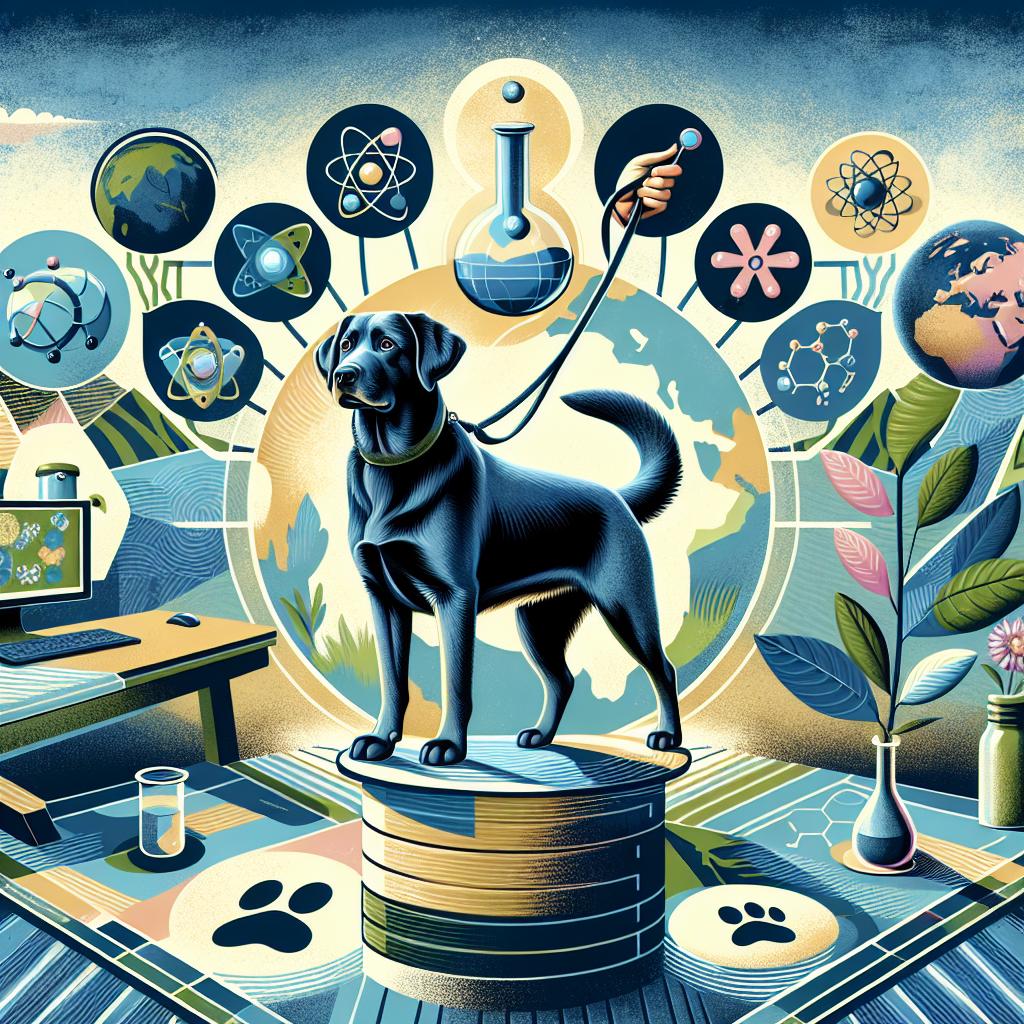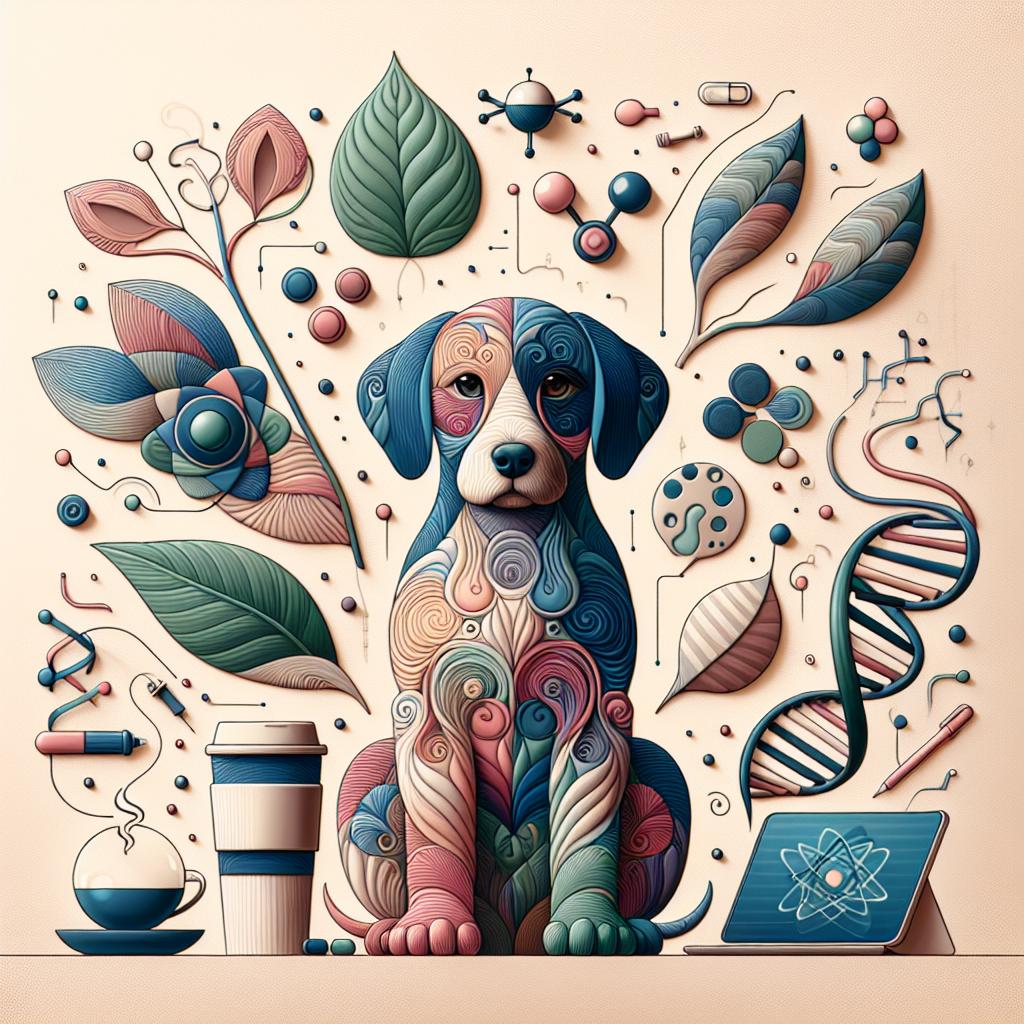Training Your Dog to Be Comfortable with New Experiences: A Journey of Growth and Trust
As pet owners, we cherish the bonds we share with our furry companions, often seeking ways to enhance their lives and enrich our experiences together. One crucial aspect of dog ownership is helping our canine friends adapt to the world beyond their familiar surroundings. Whether it’s a trip to the vet, a bustling park filled with new sights and scents, or meeting different people and animals, introducing your dog to new experiences can be both rewarding and challenging. This article delves into effective strategies and insightful tips to ensure that your dog not only embraces these moments with enthusiasm and confidence but also learns to trust you as their guide. Join us as we embark on this transformative journey, discovering the art of nurturing adaptability in our four-legged friends, one experience at a time.
Understanding Your Dogs Fear and Anxiety Triggers
To effectively address your dog’s fear and anxiety, it’s crucial to identify the specific triggers that cause these reactions. Dogs can be sensitive to various stimuli, which may include:
- New environments: Places that smell, look, or sound unfamiliar can create anxiety.
- Strange noises: Thunder, fireworks, or even loud machinery can unsettle your dog.
- Other animals: Encounters with aggressive or overly excited dogs can lead to fear.
- Separation: Many dogs experience anxiety when left alone, especially if they are not crate trained.
Understanding these triggers can help immensely in your training process. Once you’ve identified them, it becomes easier to formulate a strategy to desensitize your dog. For instance, you might create a training plan that includes:
| Trigger | Desensitization Method |
|---|---|
| New Environments | Gradual exposure on a leash, allowing sniffing and exploration. |
| Strange Noises | Playing recordings of noises at a low volume, gradually increasing. |
| Other Animals | Controlled introductions in a safe, neutral space. |
| Separation Anxiety | Short absences that gradually increase in duration. |

Gradual Exposure Techniques for Positive Reinforcement
When transitioning your dog to new experiences, utilizing gradual exposure techniques can significantly enhance their comfort level. Start by breaking down the new experience into manageable steps to avoid overwhelming them. For example, if you’re introducing your dog to crowded places, begin with quieter environments where they can observe without feeling threatened. Reward your furry friend with treats and praise for calm behavior at each stage, reinforcing positive associations with the new experience. Understanding your dog’s individual temperament is crucial; some may require more time at each stage than others. Gradual exposure allows them to build confidence and soothe any anxieties.
Incorporating positive reinforcement into training not only benefits your dog’s emotional well-being but also strengthens the bond between you. Consider keeping a log to track progress. Here’s a simple table to visualize your dog’s journey:
| Experience Level | Setting | Reward Strategy | Dog’s Response |
|---|---|---|---|
| 1 | Quiet park | High-value treats | Relaxed, curious |
| 2 | Moderate foot traffic | Praise & light treats | Slightly hesitant |
| 3 | Busy street | Calm pets & treats | Excited yet focused |
By maintaining a consistent routine of gradual exposure, each achievement serves as a stepping stone. This method not only empowers your dog to embrace challenges with confidence but also enriches their overall social experiences, paving the way for a well-adjusted, happy companion.

Creating a Safe Space for Exploration and Learning
Creating an environment where your dog can explore and learn is essential for their development and well-being. One of the first steps in fostering this atmosphere is to introduce gradual exposure to new situations. This could involve visiting various parks, meeting different people or animals, and even trying out new toys. Always ensure the experience is framed positively, using treats and praise to reinforce their bravery. This helps build their confidence and encourages a sense of security as they navigate unfamiliar environments.
Another important aspect is to observe your dog’s body language and respond accordingly. Look for signs of discomfort, such as cowering or excessive barking, and adjust the level of exposure. Some strategies to consider might include:
- Short Sessions: Keep new experiences brief to prevent overwhelming your dog.
- Safe Zones: Provide a familiar blanket or toy that they can retreat to if feeling anxious.
- Positive Associations: Combine new experiences with their favorite treats or activities.
By focusing on these techniques, you can successfully cultivate a nurturing space that not only helps your dog feel safe but also encourages curiosity and exploration, ultimately leading to a well-adjusted and happy companion.

The Role of Consistency and Patience in Training
When it comes to helping your dog embrace new experiences, nothing is more crucial than maintaining a steady routine. Consistency in your training practices creates a sense of security for your canine companion, allowing them to understand what to expect. This can be achieved by:
- Establishing a Routine: Keep training sessions at the same time each day to foster familiarity.
- Using Consistent Commands: Always use the same words and gestures for commands to avoid confusion.
- Equal Reinforcement: Reward your dog consistently for desired behaviors to strengthen learning.
While consistency lays the foundation, patience serves as the bridge that leads to successful outcomes. Just as humans take time to adapt, dogs require their own timeline to acclimate to new stimuli. Embrace the journey by:
- Celebrating Small Wins: Acknowledge every tiny achievement as a step in the right direction.
- Understanding Individual Paces: Recognize that some dogs may need more time than others to feel at ease.
- Staying Calm and Collected: Your demeanor influences your dog; remain patient and positive through the process.
Q&A
Q: Why is it important to train my dog to be comfortable with new experiences?
A: Training your dog to handle new experiences is essential for their overall well-being and socialization. A well-adjusted dog is less likely to develop anxiety or behavioral issues, fostering a healthier relationship between you and your furry friend. Positive exposure helps them adapt to different environments, sounds, and people, making daily life more enjoyable and secure.
Q: What are some common new experiences that dogs might encounter?
A: Dogs can face a myriad of new experiences, such as meeting new people, encountering different breeds, visiting busy parks, or experiencing various weather conditions. Other examples include car rides, trips to the vet, grooming sessions, or even just new household items. Each new experience provides valuable learning opportunities for your canine companion.
Q: How can I help my dog feel more comfortable during these new experiences?
A: Start by introducing new experiences gradually and in a controlled environment. Utilize positive reinforcement, such as treats and praise, to reward calm behavior. Observing your dog’s body language will allow you to identify their comfort levels and make adjustments as needed. For example, if your dog seems nervous, take a step back and allow more time for acclimatization.
Q: What techniques can I use to introduce my dog to new experiences?
A: Use a variety of techniques such as desensitization and counter-conditioning. Desensitization involves gradually exposing your dog to a new experience in small, manageable doses, while counter-conditioning aims to change your dog’s emotional response to the experience by pairing it with something positive, like their favorite treat. Consistency and patience will be key!
Q: Should I let my dog set the pace when trying new experiences?
A: Absolutely! Every dog has its own pace and comfort level. Allowing your dog to set the pace can help reduce stress and build their confidence. Be attentive to their signals—if they seem overwhelmed, it’s okay to slow down and create a more supportive environment. The goal is to make each new experience a positive one!
Q: Can training help with my dog’s fear of specific situations?
A: Yes, training can be incredibly effective in managing fears. Techniques such as systematic desensitization can help your dog gradually face and overcome their fears. Always approach these situations with care; sometimes professional guidance from a veterinarian or a certified dog trainer can provide tailored strategies for dealing with more severe fears.
Q: How do I know if my dog is making progress in adapting to new experiences?
A: Progress can be measured in various ways, such as increased curiosity and decreased signs of fear or anxiety during new experiences. If your dog shows signs of relaxation, engages positively, or is willing to explore new surroundings, you’re likely on the right track. Keep track of your dog’s behavior changes; even small milestones are worth celebrating!
Q: What should I avoid when training my dog for new experiences?
A: Avoid overwhelming your dog with too much too soon. Pushing them into a situation that is beyond their comfort zone can lead to heightened anxiety and setbacks in training. Also, never punish your dog for displaying fear; instead, focus on positive reinforcement and creating a supportive atmosphere for learning.
Q: How long does this training process usually take?
A: The duration of this training process varies greatly among dogs based on their temperament, past experiences, and the types of new situations involved. Some dogs may adapt quickly within a few sessions, while others may take weeks or months. The key is consistency and patience; allow your dog the time they need to learn and adjust at their own pace.
Q: Any final tips for success?
A: Above all, remember to keep the experience fun and positive! Be patient and celebrate progress, no matter how small. Always communicate love and support to your dog, reinforcing that you’re there for them as they navigate the world of new experiences. Your bond will grow stronger as they learn to trust in your guidance!
Final Thoughts
In the journey of dog ownership, fostering an adaptable and confident companion can significantly enhance the bond you share. By slowly introducing your furry friend to new experiences, environments, and people, you’re not just training them—you’re nurturing their curiosity and resilience. Remember to be patient and celebrate the small victories along the way. Each unfamiliar situation presents an opportunity for your dog to learn and grow. With your guidance, encouragement, and love, you can help them navigate the world with ease and joy. So, step outside, explore new horizons, and watch as your canine companion flourishes into a well-rounded pet, ready to face whatever adventures lie ahead. Together, you and your dog can embrace life’s unpredictability, turning each new experience into a cherished memory. Happy training!

